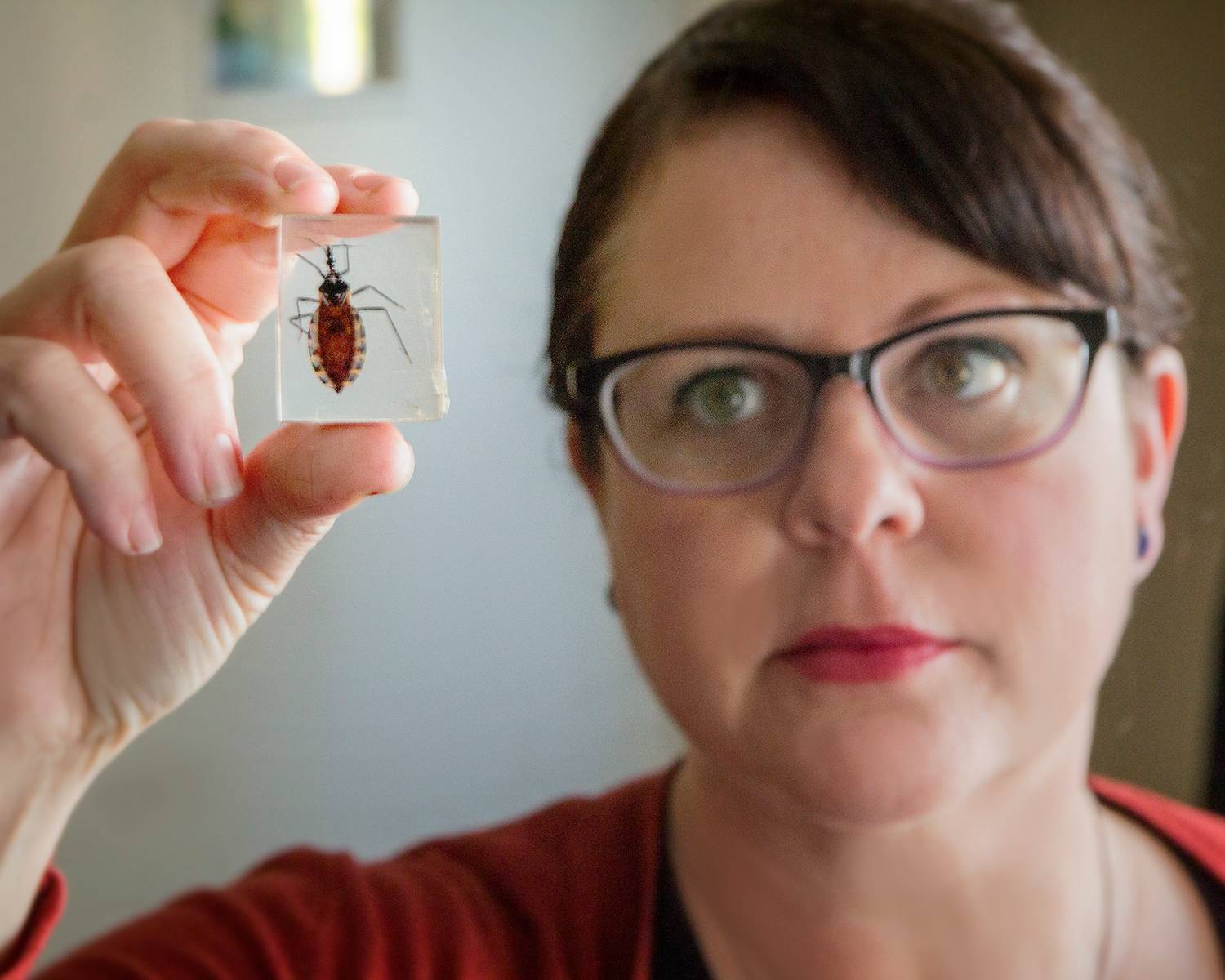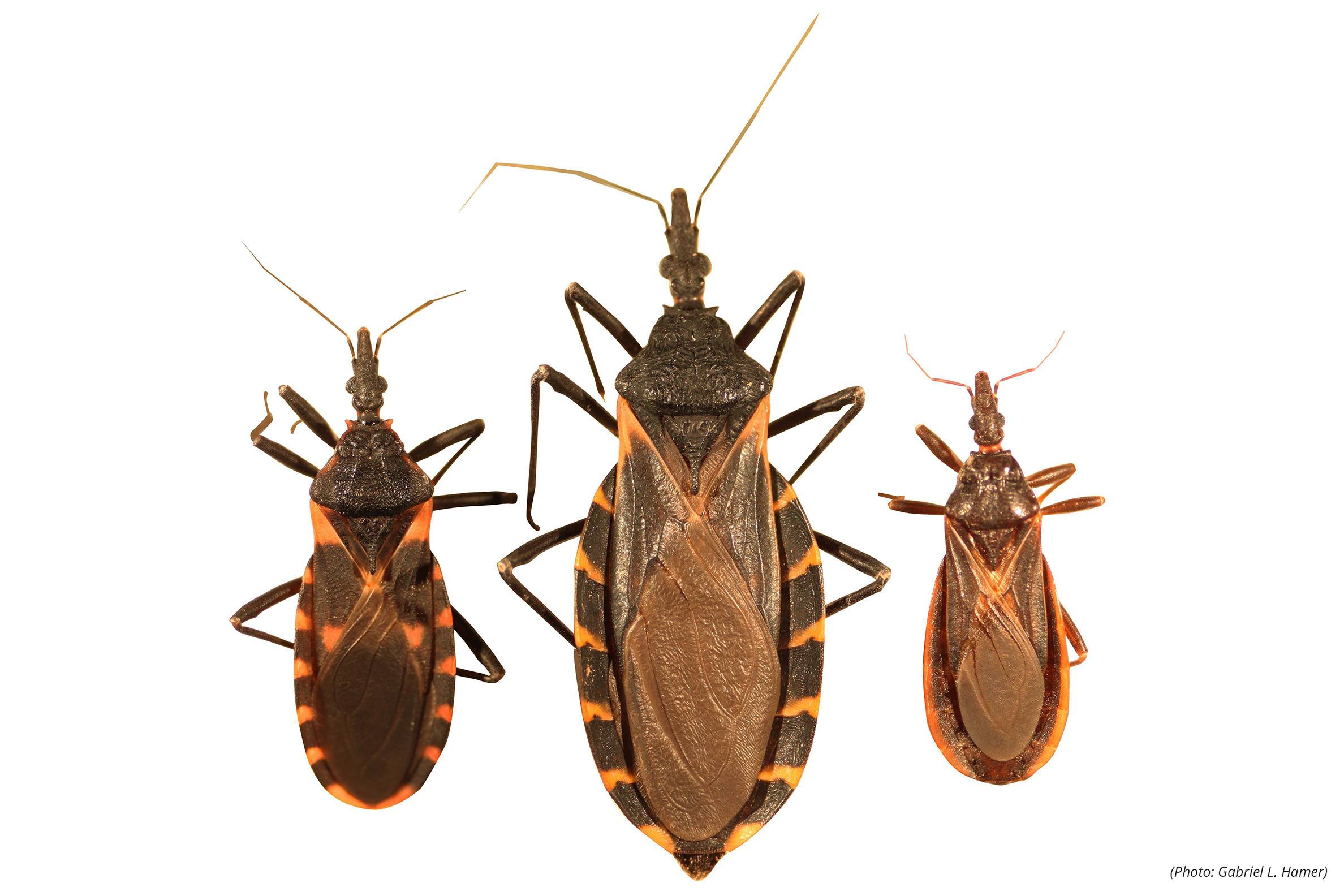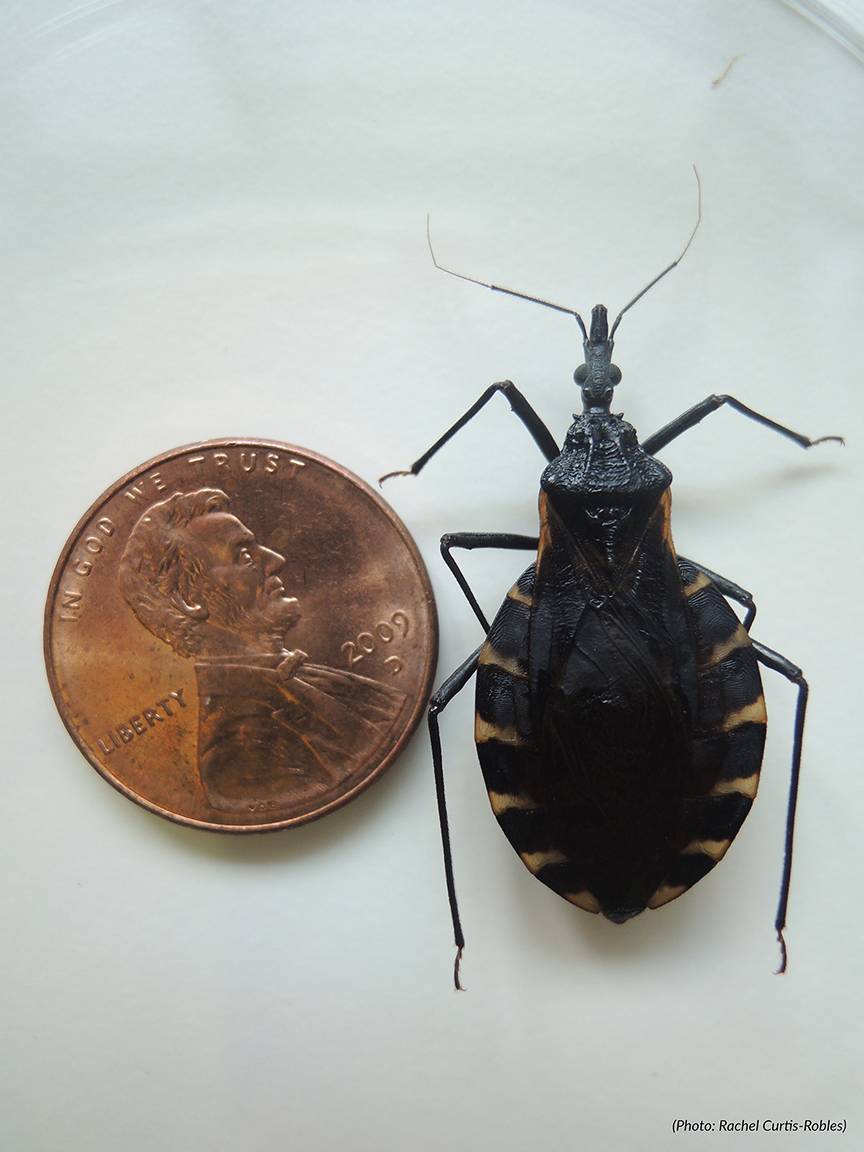Chagas Disease: A Silent Killer with a Cure
Staff Contributor | April 12, 2019

Among the most well-known disease carrying bugs in Texas are mosquitos, spiders, cockroaches and ticks. But the Kissing Bug is a serious, lesser known threat to Texans. While it has a cute name, many folks don’t know there’s a not-so-cute, deadly parasite the bug can transmit.
Texas State Assistant Professor Dr. Paula Stigler Granados has spent several years researching Chagas disease, a “silent killer” carried through many Kissing Bugs. Dr. Stigler Granados recently shared what the disease means, especially for migrants, as well as those who may contract the disease locally without realizing it.
What is Chagas Disease?
“The disease itself is interesting and complex,” explained Dr. Stigler Granados. Caused by a parasite called T. Cruzi, Chagas disease manifests itself in two stages: acute and chronic. During the acute phase of eight to 12 weeks, people may experience mild flu-like symptoms, itchiness at the site of the bite, or no symptoms at all. Once the acute phase is over, the person enters into the chronic stage, which can either be with or without symptoms.
The beginning chronic stage of Chagas can last for years or even decades with no symptoms at all, hence the name “silent killer”. Many people will never know they have encountered a kissing bug or even know they have the disease. However, if the disease isn’t found and treated before the person develops symptoms, they may go on to develop symptoms and the disease will often be untreatable and fatal. Symptoms include irreversible cardiac complications (including heart failure) and sometimes intestinal issues such as megaesophagus and megacolon. Only 30-40% of infected individuals will go on to ever develop symptoms, while 60% can live out their lives with no complications.

Who is most at risk?
The insects and the disease are more prevalent in Latin American countries partly due to climate and poorer living conditions. However, the insects are common in the southern U.S. and Chagas disease has been documented in the U.S. as early as the 1930’s. Because Texas is an entry point for many migrants from areas where Chagas is more prevalent means consideration should be given on how to treat persons coming from higher risk areas. When people coming from Latin American countries are able to be seen by local physicians, the doctors aren’t often familiar with the disease and treatment options that are available. When time is of the essence, treatment cannot wait.
Chagas disease is a relatively slow moving disease and is not contagious. It cannot be transmitted from animal to human or human to human, except it can be passed from mother to fetus. Pregnant women coming from endemic areas are encouraged to know their status to prevent passing on the disease to their children. Additionally, Texas residents are still at risk, regardless of where they come from. More than 60% of Kissing Bugs in the state have been found to carry the parasite. Although not commonly found in urban areas, they are attracted to any areas where they can easily access a blood meal. Rats nests, animal kennels, wooded areas and debris piles are all good living conditions for kissing bugs.

How is research changing the conversation?
As Dr. Stigler Granados shared, “not everyone is talking about this disease- one of the biggest barriers is lack of awareness amongst the health communities in the United States.” Research, such as Dr. Stigler Granados’ recent study on healthcare gaps for patients, help connect the dots. Because Chagas is a zoonotic disease, animals can contract the disease as well. Veterinarians who are seeing the disease more often than physicians and are more familiar with the disease can actually help communities better understand their risks.
With such a huge lack of awareness in the U.S. about the disease, one of Dr. Stigler Granados’ biggest concerns is congenital transmission. If most pregnant women are seeking health care, it’s a great opportunity to implement a screening program to catch the disease early. Right now, she’s advocating for more physicians to screen pregnant mothers in an effort to better understand prevalence. There are newly available effective and inexpensive treatment options for both the infants and the moms, making it a win-win situation when it is caught early.
“Once we start raising awareness with one audience of health professionals and mothers, we can work on providing greater education to others,” added Dr. Stigler Granados. She’s hoping to get approval on a grant to implement screening newborns, which would be a big milestone to help with understanding prevalence and leading to better diagnosis and treatment.
Dr. Stigler Granados is at pes52@txstate.edu.
Share this article
For more information, contact University Communications:Jayme Blaschke, 512-245-2555 Sandy Pantlik, 512-245-2922 |